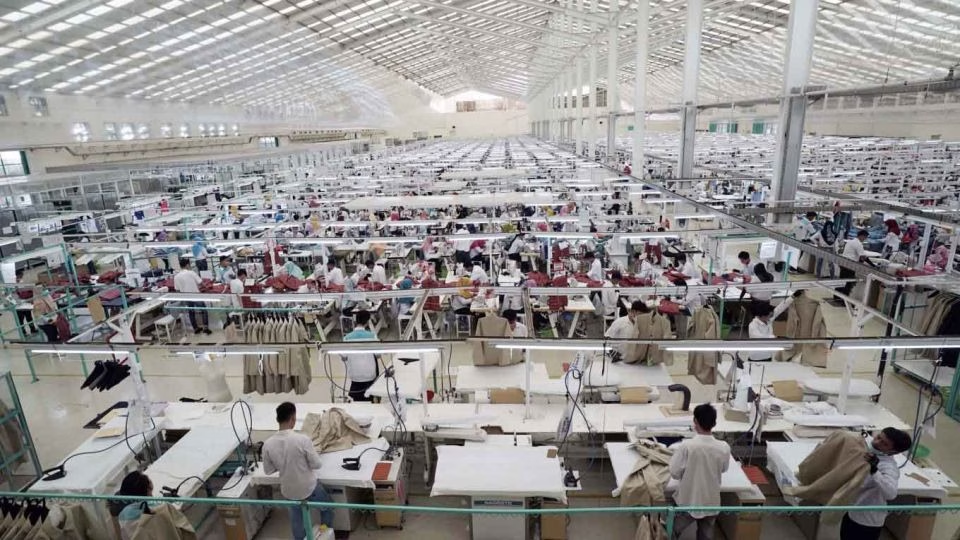Hit hard by tariffs, Indonesia’s textile makers want to ramp up US cotton imports
Diversifying exports to countries beyond the US is unfeasible in the short term because of either limited market demand or intense competition from local players in target countries.
JAKARTA – The textile industry is set to be among the hardest hit by the recent United States tariff hikes, with 40 percent of Indonesian textiles and apparel exports bound for the American market.
Industry players warn that the 32 percent so-called “reciprocal” tariff to be imposed on Indonesian goods once a 90-day suspension granted for bilateral negotiations ends could “accelerate layoffs” in a sector already struggling before the policy surfaced.
Textile industry associations have suggested increasing imports of raw materials like cotton from the US as a bargaining chip to balance bilateral trade and potentially lower the looming tariff, as well as protecting the domestic market by constraining imports.
Efforts to diversify Indonesian exports beyond the US are deemed unfeasible in the short term because of either limited market demand or intense competition from local players in target countries.
Indonesia, which recorded a $16.8 billion trade surplus with the US last year, has landed on a long list of countries facing steep tariff hikes. On April 2, US President Donald Trump announced a 32 percent tariff on Indonesian goods that took effect on Wednesday.
However, Trump reversed course on Wednesday, temporarily lowering duties for all affected countries to a “baseline” rate of 10 percent for 90 days, with the exception of slapping a staggering 125-percent basic tariff on imports from China.
Redma Gita Wirawasta, chairman of the Indonesian Filament Yarn Producers Association (APSyFI), said around 40 percent of the wider industry’s exports went to the US, mostly in the form of finished goods. Indonesia is currently the fifth-largest textile and apparel exporter to the US behind China, India, Vietnam and Bangladesh.
He warned that the new US tariffs could erode Indonesia’s price competitiveness in the American market. At the same time, countries hit with even steeper reciprocal tariffs might start redirecting their excess supply to Indonesia, potentially flooding the local market with cheaper goods.
“That would disrupt the domestic industry and accelerate layoffs across the board,” Redma said during a press conference on April 4, emphasizing the need to tighten import controls and enforce local content requirements (TKDN).
Even before Trump’s tariff announcement, Indonesia’s textile, apparel and footwear sectors were under pressure because of declining export demand and an influx of cheap imported products.
One of the most striking cases is textile giant PT Sri Rejeki Isman (Sritex), which declared bankruptcy in October last year and officially ceased operations on March 1, leaving more than 10,000 workers unemployed.
On March 5, the Banten Manpower and Transmigration Agency reported that two major footwear manufacturers, PT Adis Dimension Footwear and PT Victory Chingluh Indonesia, which produce for global brands like Nike, Adidas, Reebok and Mizuno, had either laid off or were in the process of laying off thousands of workers.
Some other exporters, including the Association of Indonesian Metalworking and Machinery Companies (Gamma), opined that the 90-day delay in enforcing the reciprocal tariffs could trigger a surge in demand from US importers eager to capitalize on the temporary reprieve.
However, APSyFI’s Redma cautioned against ramping up exports during this window, as a sudden spike could further widen the US trade deficit with Indonesia, the very issue that prompted the tariff policy in the first place.
Instead, he urged the government to focus on diplomacy by committing to increased imports of US goods and addressing regulatory barriers that may hinder trade.
Together with the Indonesian Textile Association (API), the APSyFI proposes that the government use cotton imports as a strategic bargaining chip in trade talks.
Redma noted that Indonesia once imported around US$300 million worth of cotton from the US, but that figure had dropped to just $140 million because of the influx of intermediary textile products from other countries.
To help ease tensions and reduce the looming tariff, Redma suggested Indonesia shift its cotton imports back to the US. API chairman Jemmy Kartiwa Sastraatmaja added that the shift would not significantly affect prices, as long as local manufacturers align their procurement cycles with the US cotton harvest season.
Dependence on US market
The Indonesian government has pledged to negotiate with the US, offering to boost imports of American goods and ease trade and business regulations. Finance Minister Sri Mulyani Indrawati also emphasized the importance of diversifying export destinations to reduce Indonesia’s heavy reliance on the US market.
However, textile associations argue that breaking away from the US will not be easy. As the world’s largest textile goods consumer, backed by its massive economy, the US remains a crucial market.
However, Indonesia itself may be another significant market for textiles.
“What we need to do now is negotiate smartly with the US, while also smartly protecting our domestic market,” said API’s Jemmy.
API deputy chairman for industrial issues Ian Syarif added that exporting to other major textile producers like China, India, Vietnam and Bangladesh is not a viable option as those countries impose their own trade barriers to shield local industries.
“Our export destinations must have the purchasing power to absorb our products. And in the textile industry, the biggest consumer is still the US.”
